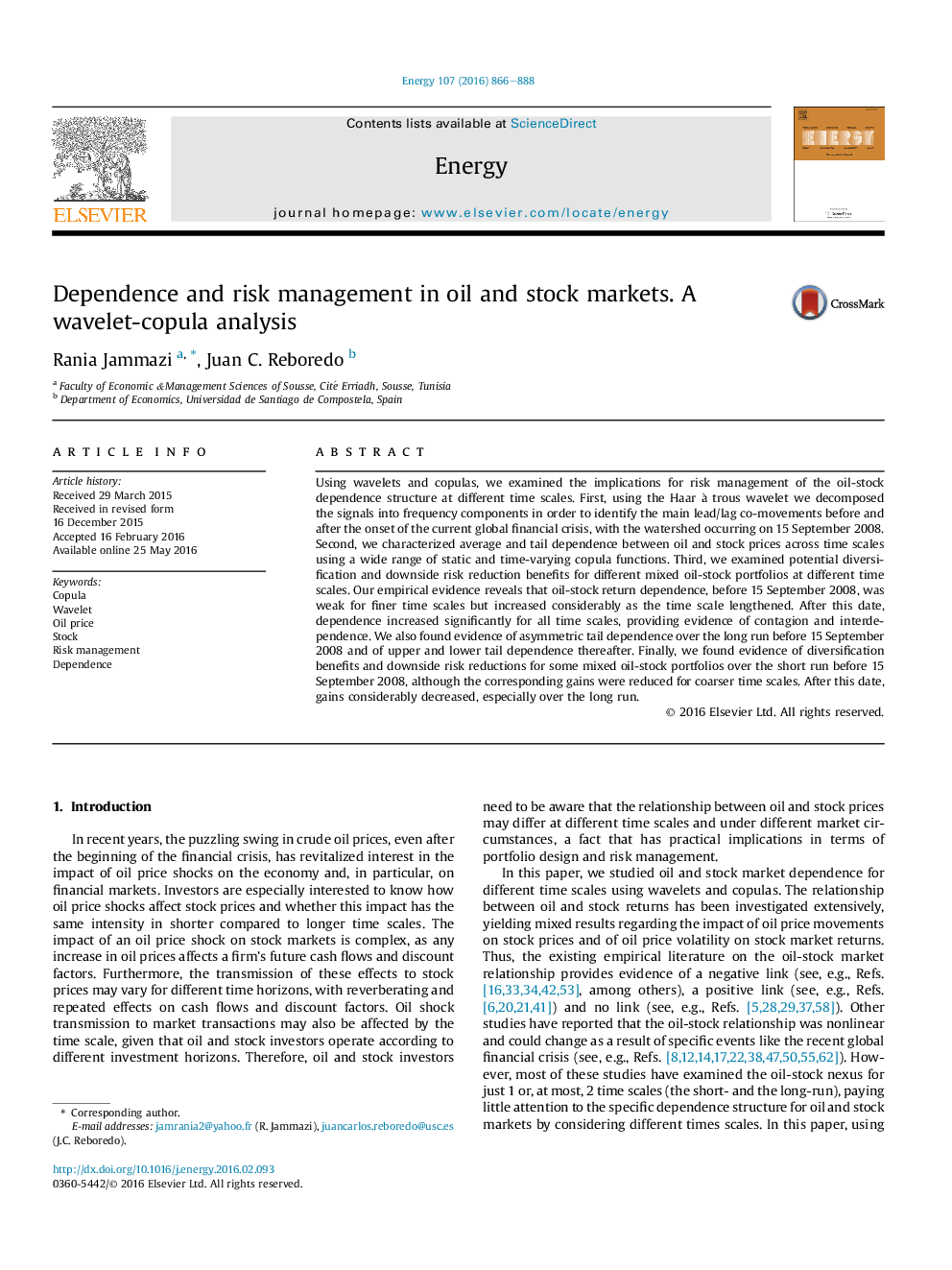| Article ID | Journal | Published Year | Pages | File Type |
|---|---|---|---|---|
| 1730889 | Energy | 2016 | 23 Pages |
Abstract
Using wavelets and copulas, we examined the implications for risk management of the oil-stock dependence structure at different time scales. First, using the Haar à trous wavelet we decomposed the signals into frequency components in order to identify the main lead/lag co-movements before and after the onset of the current global financial crisis, with the watershed occurring on 15 September 2008. Second, we characterized average and tail dependence between oil and stock prices across time scales using a wide range of static and time-varying copula functions. Third, we examined potential diversification and downside risk reduction benefits for different mixed oil-stock portfolios at different time scales. Our empirical evidence reveals that oil-stock return dependence, before 15 September 2008, was weak for finer time scales but increased considerably as the time scale lengthened. After this date, dependence increased significantly for all time scales, providing evidence of contagion and interdependence. We also found evidence of asymmetric tail dependence over the long run before 15 September 2008 and of upper and lower tail dependence thereafter. Finally, we found evidence of diversification benefits and downside risk reductions for some mixed oil-stock portfolios over the short run before 15 September 2008, although the corresponding gains were reduced for coarser time scales. After this date, gains considerably decreased, especially over the long run.
Related Topics
Physical Sciences and Engineering
Energy
Energy (General)
Authors
Rania Jammazi, Juan C. Reboredo,
